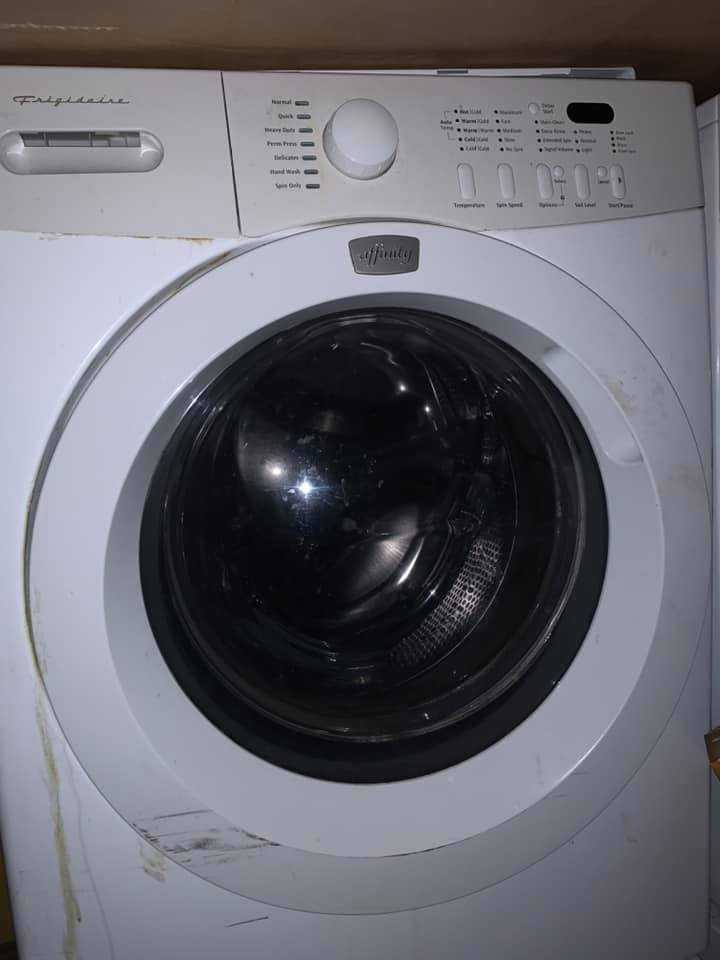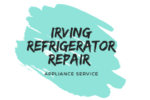Washing machine repair is a common occurrence with the advancing technologies and the new features they offer. Washer troubleshooting is getting complicated nowadays. This is a troubleshooting guide that should help with diagnosing your washer problems.
This article is an excerpt from the book called “Cheap and Easy” by “Douglas Emley”. Thanks to the author for this useful information.
Poor wash quality mainly involves heavy spotting and filming or etching of the dishes. It can usually be traced to cold water or excessively hot, hard or soft water, poor detergent, or inadequate drying.
Washing dishes in dishwater is not just a matter of blowing hot water at them. It is not just simply a mechanical or hydraulic process. The chemicals you use, from detergent to rinse agent, are extremely critical. And the temperature of the water that dissolves and carries these chemicals is critical as well.
Note, however, that there are a few things that are prone to spot even if your dishwasher is operating perfectly. Teflon, for example, has a relatively porous surface that holds water, then sort of oozes it back out later. It is difficult to air dry and it usually must be wiped with a towel. Certain kinds of plastic have similar properties.
SPOTTING
It is CRITICAL to have washed and rinse water at around 150 degrees, plus or minus ten degrees. Any cooler and the detergent will not dissolve properly, resulting in spotting or filming. If the dishwasher has a heater, the fill water maybe just a little cooler, as low as 125, but it should be at least 140 well before the end of each cycle. The heater is not designed to heat cold water; it is designed to maintain water temperature.
To test the temperature, Turn a glass upright so it will collect water and put a candy thermometer into it. Let it run in the wash cycle for at least five minutes, then open the door and see what the temperature is.
If the dishwasher is installed right next to the kitchen sink, as it is in most installations, you can run water out the sink and test the temperature there. If you do, however, take note of how long the sink faucet runs cold before hot water starts running out. And try to note how many gallons of cold water this amounts to. That’s roughly how many gallons of cold water that are entering your dishwasher before any hot water gets there.
If your water temperature is too cool, you have several options, depending on the cause. You can try turning up the water heater temperature; sometimes this is enough. But to my experience, water fill temperature problems are usually caused by the dishwasher being installed too far away from the water heater. The tub fills with only a gallon or two of water; by the time the hot water gets from the heater to the dishwasher, the tub is at least half full of cold water. If the dishwasher water feed line comes off the same line that feeds the sink, it may help to warm up the line by running water out the hot water sink faucet before starting the dishwasher. However, the hot water line may cool off again between the wash and rinse cycles, so you may need to leave the sink valve cracked open a little to keep the line warm. This wastes a tremendous amount of water.

It’s a tough problem, and solving it can involve redesigning the entire water system in your house. Before you do that, you might consider installing a small instant water heater nearer to the dishwasher. There are several small heaters available that heat just a few gallons and are made to be installed beneath the sink. Ask your appliance parts dealer or check your local hardware store.
About the worst case of water temperature problems I ever saw was caused by improper installation. The complaint was water spots on the dishes. Whoever installed the dishwasher had left too much rubber drain hose connected, and when the dishwasher was pushed back into place beneath the counter, the drain hose kinked badly. The old, cold water would never drain out of the tub at the beginning of the cycle, and thus it would not fill with new hot water. (The anti-flood float switch would prevent overfill.) Incidentally, it had been installed two years before, and the people had been trying to use it regularly since then. Thus, in addition to that two-year-old cold water in the bottom of the tub, there were also two years’ worth of detergent and disgusting, moldy leftovers. The solution was to simply cut the drain hose shorter, but I have no idea how many cycles it took to melt all that gunk out of the tub. I also have no idea why it took them two years to call me.
AIR GAP
There is also an anti-siphon device, called an air gap, built into the drain line. It is required by law in most installations. It prevents accidental backflow(siphoning) into the dishwasher from the house drain lines. A typical air gap re-directs water 180 degrees, and thus it has constrictions that can easily trap a chunk of food trying to pass through it.
Symptoms are the same as for any other blockage of the drain line, except that you may also see water flowing out of the air gap vents directly into the sink.
Fortunately, they are pretty easy to open and clean. In most installations, it is a little chrome or brass blob with a couple of vent holes in it, sitting right next to your sink faucet handles. If it’s not there, find the hose that drains your dishwasher into the sink trap or garbage disposal, and trace it back directly to the air gap.
Usually, all that’s involved in cleaning it is to pull off the little chrome blob and unscrew the top of the air gap itself. Both drain pipes will be exposed.
CLOGGING OF THE WATER SYSTEM
The pump suction screen or spray arms can become clogged by hard water lime or by bits of food or glass from broken dishes.
To diagnose, remove the spray arm assembly and shake it. Any bits of glass or other debris will make a noisy clatter. Try to remove them. It can be difficult; it’s a lot like trying to fish coins out of a piggy bank. If it’s too hard, just replace the spray arm.
If you have a lime or hard water buildup clogging any water holes, run some Lime-Away through your machine as described in preventive maintenance.
POOR DETERGENT OR RINSE AGENT
Yup, you get what you pay for. Use acidic or hard detergent, and you will have problems and you will shorten the life of your machine significantly. I know you don’t want to hear me say that, but when it comes to dishwasher it’s really true; even more so than with other machines. It doesn’t pay to cut corners on what you put into your dishwasher. C’mon, now, I always tell you when you can “economize,” right? Trust me here. Don’t be cheap. You can save a few pennies now, but it will cost you dollars later.
Here’s the scoop: Use dry (powder) Cascade. The real stuff. Do not use liquid detergent. In my opinion, they have not yet figured out how to make liquid detergent that dissolves properly. And especially do not use regular liquid dish soap. It is made to studs up, which you do not want in a dishwasher.

Also, use”Jet-Dry” and check it regularly.”Jet-Dry” causes water to sheet and run off the dishes, instead of beading up and spotting them.
Also, use a product called “Glass Magic” regularly to assist in preventing filming or etching of the glass surfaces. Put a mixture of about 1/3 Glass Magic to about 2/3 powdered Cascade in the pop-open door dispenser. This will open and dispense the mixture during the second wash cycle.
Calcium buildup and acidity do not just affect how your dishes look. Look, if acid is eating and calcium is abrading the glass in your dishes, what do you think those chemicals are doing to the working parts of your machine, under high-temperature and high-pressure conditions?
ACID ETCHING
Etching of your glassware is the damage of a more permanent nature. In early stages, the glassware may have an iridescent blue, pink, or purplish look when you hold it under the light in a certain way. In later stages, the glass takes on a cloudy or milky appearance, or it may even be pitted. These cannot be removed by any amount of scrubbing. This later stage should not be confused with filming, which can be removed by as little Lime away, Glass Magic or White vinegar.
The etching is caused by overly acidic conditions inside your dishwasher. It does not seem to be related to the cost or quality of the glass. Softened water tends to be acidic, to begin with. Softened water at excessively high temperature and in combination with lots of detergents seems to be the conditions most conducive to acid etching.
If you have soft water, make sure it is entering the dishwasher at a temperature below 150 degrees. Also, try cutting the amount of detergent you use in half. (Make sure the dishes are still being cleaned and sterilized, of course!) Realize, however, that some types of glass seem to be prone to etching no matter what you do.
DRYER BLOWER INOPERATIVE
Excessive spotting may mean the dryer blower or heater is not working. Test the motor or heater as described and replace if defective.
IMPROPER LOADING
Loading the dishwasher improperly can cause all sorts of problems, from blockage of the water spray to dish or pimp damage. Make sure the dishes are loaded properly as described, preventive maintenance.
Continue reading about “Basic Repair and Safety Precautions“


